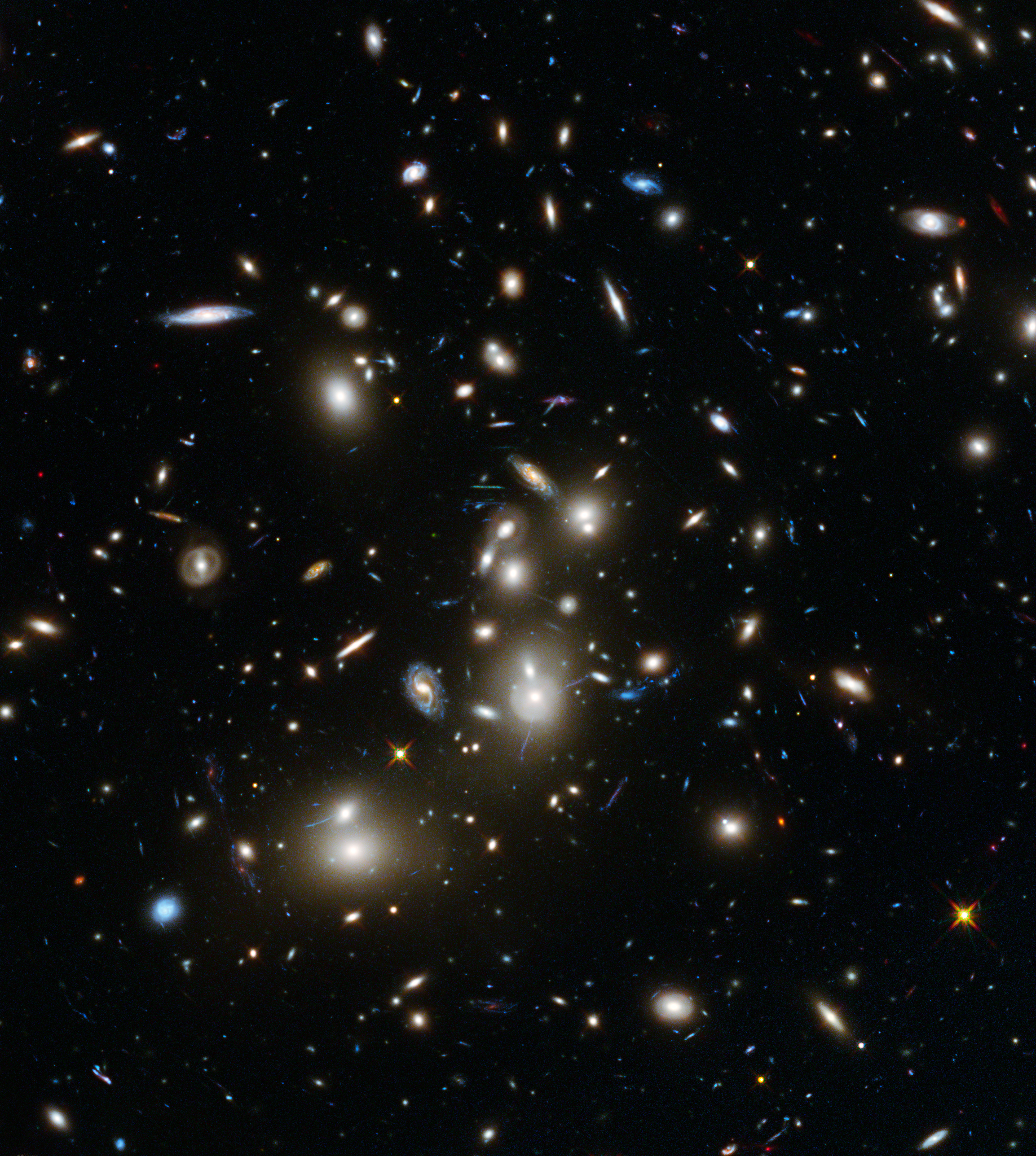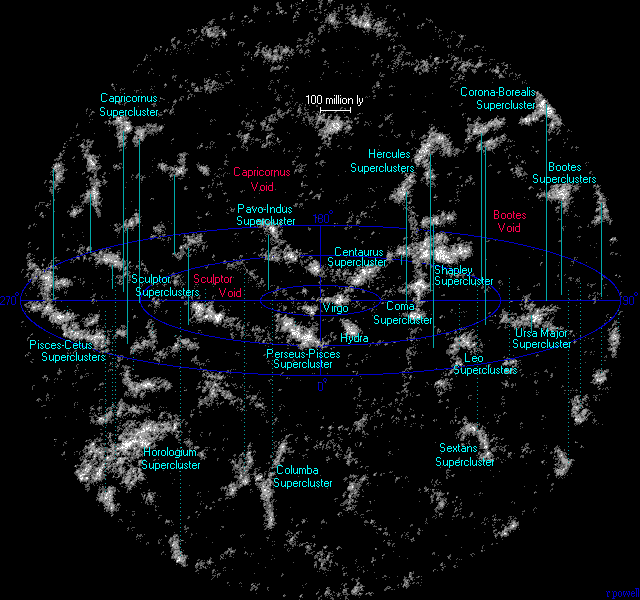|
Ursa Major Filament
Ursa Major Filament is a galaxy filament. The filament is connected to the CfA Homunculus, a portion of the filament forms a portion of the "leg" of the Homunculus.''The Astrophysical Journal Supplement Series'', Volume 121, Issue 2, pp. 445-472. "Photometric Properties of Kiso Ultraviolet-Excess Galaxies in the Lynx-Ursa Major Region" ''04/1999'' See also * Abell catalogue * Large-scale structure of the universe * Supercluster A supercluster is a large group of smaller galaxy clusters or galaxy groups; they are among the largest known structures in the universe. The Milky Way is part of the Local Group galaxy group (which contains more than 54 galaxies), which in turn ... References Galaxy filaments Large-scale structure of the cosmos {{physical-cosmology-stub ... [...More Info...] [...Related Items...] OR: [Wikipedia] [Google] [Baidu] |
Galaxy Filament
In cosmology, galaxy filaments (subtypes: supercluster complexes, galaxy walls, and galaxy sheets) Boris V. Komberg, Andrey V. Kravtsov, Vladimir N. Lukash; "The search and investigation of the Large Groups of Quasars" ; ;R.G. Clowes; "Large Quasar Groups - A Short Review"; ''The New Era of Wide Field Astronomy'', ASP Conference Series, vol. 232.; 2001; Astronomical Society of the Pacific; ; are the largest known structures in the universe, consisting of walls of gravitationally bound galaxy superclusters. These massive, thread-like formations can reach 80 parsec#Megaparsecs and gigaparsecs, megaparsecs ''h''−1 (or of the order of 160 to 260 million light-years) and form the boundaries between large void (astronomy), voids. Formation In the Lambda-CDM model, standard model of the evolution of the universe, galactic filaments form along and follow web-like strings of dark matter—also referred to as the galactic web or cosmic web. It is thought that this dark matter dictates ... [...More Info...] [...Related Items...] OR: [Wikipedia] [Google] [Baidu] |
The Astrophysical Journal
''The Astrophysical Journal'', often abbreviated ''ApJ'' (pronounced "ap jay") in references and speech, is a peer-reviewed Peer review is the evaluation of work by one or more people with similar competencies as the producers of the work (peers). It functions as a form of self-regulation by qualified members of a profession within the relevant field. Peer review ... scientific journal of astrophysics and astronomy, established in 1895 by American astronomers George Ellery Hale and James Edward Keeler. The journal discontinued its print edition and became an electronic-only journal in 2015. Since 1953 ''The Astrophysical Journal Supplement Series'' (''ApJS'') has been published in conjunction with ''The Astrophysical Journal'', with generally longer articles to supplement the material in the journal. It publishes six volumes per year, with two 280-page issues per volume. ''The Astrophysical Journal Letters'' (''ApJL''), established in 1967 by Subrahmanyan Chandrasekhar as ... [...More Info...] [...Related Items...] OR: [Wikipedia] [Google] [Baidu] |
Abell Catalogue
The Abell catalog of rich clusters of galaxies is an all-sky catalog of 4,073 rich galaxy clusters of nominal redshift ''z'' ≤ 0.2. This catalog supplements a revision of George O. Abell's original "Northern Survey" of 1958, which had only 2,712 clusters, with a further 1,361 clustersthe "Southern Survey" of 1989, published after Abell's death by co-authors Harold G. Corwin and Ronald P. Olowin from those parts of the south celestial hemisphere that had been omitted from the earlier survey. The Abell catalog, and especially its clusters, are of interest to amateur astronomers as challenge objects to be viewed in dark locations on large aperture amateur telescopes. The Northern Survey The original catalog of 2,712 rich clusters of galaxies was published in 1958 by George O. Abell (1927–1983), who was then studying at the California Institute of Technology. The catalog, which formed part of Abell's PhD thesis, was prepared by means of a visual inspection of th ... [...More Info...] [...Related Items...] OR: [Wikipedia] [Google] [Baidu] |
Observable Universe
The observable universe is a ball-shaped region of the universe comprising all matter that can be observed from Earth or its space-based telescopes and exploratory probes at the present time, because the electromagnetic radiation from these objects has had time to reach the Solar System and Earth since the beginning of the cosmological expansion. There may be 2 trillion galaxies in the observable universe, although that number was reduced in 2021 to only several hundred billion based on data from '' New Horizons''. Assuming the universe is isotropic, the distance to the edge of the observable universe is roughly the same in every direction. That is, the observable universe is a spherical region centered on the observer and is unique for every unique observational position. The word ''observable'' in this sense does not refer to the capability of modern technology to detect light or other information from an object, or whether there is anything to be detected. It refers to the ... [...More Info...] [...Related Items...] OR: [Wikipedia] [Google] [Baidu] |
Supercluster
A supercluster is a large group of smaller galaxy clusters or galaxy groups; they are among the largest known structures in the universe. The Milky Way is part of the Local Group galaxy group (which contains more than 54 galaxies), which in turn is part of the Virgo Supercluster, which is part of the Laniakea Supercluster."Earth's new address: 'Solar System, Milky Way, Laniakea ''Nature (journal), Nature'' The large size and low density of superclusters means that they, unlike clusters, expand with the Hubble expansion. The number of superclusters in the observable universe is estimated to be 10 million. Existence [...More Info...] [...Related Items...] OR: [Wikipedia] [Google] [Baidu] |
Galaxy Filaments
In cosmology, galaxy filaments (subtypes: supercluster complexes, galaxy walls, and galaxy sheets) Boris V. Komberg, Andrey V. Kravtsov, Vladimir N. Lukash; "The search and investigation of the Large Groups of Quasars" ; ;R.G. Clowes; "Large Quasar Groups - A Short Review"; ''The New Era of Wide Field Astronomy'', ASP Conference Series, vol. 232.; 2001; Astronomical Society of the Pacific; ; are the largest known structures in the universe, consisting of walls of gravitationally bound galaxy superclusters. These massive, thread-like formations can reach 80 megaparsecs ''h''−1 (or of the order of 160 to 260 million light-years) and form the boundaries between large voids. Formation In the standard model of the evolution of the universe, galactic filaments form along and follow web-like strings of dark matter—also referred to as the galactic web or cosmic web. It is thought that this dark matter dictates the structure of the Universe on the grandest of scales. Dark matte ... [...More Info...] [...Related Items...] OR: [Wikipedia] [Google] [Baidu] |




